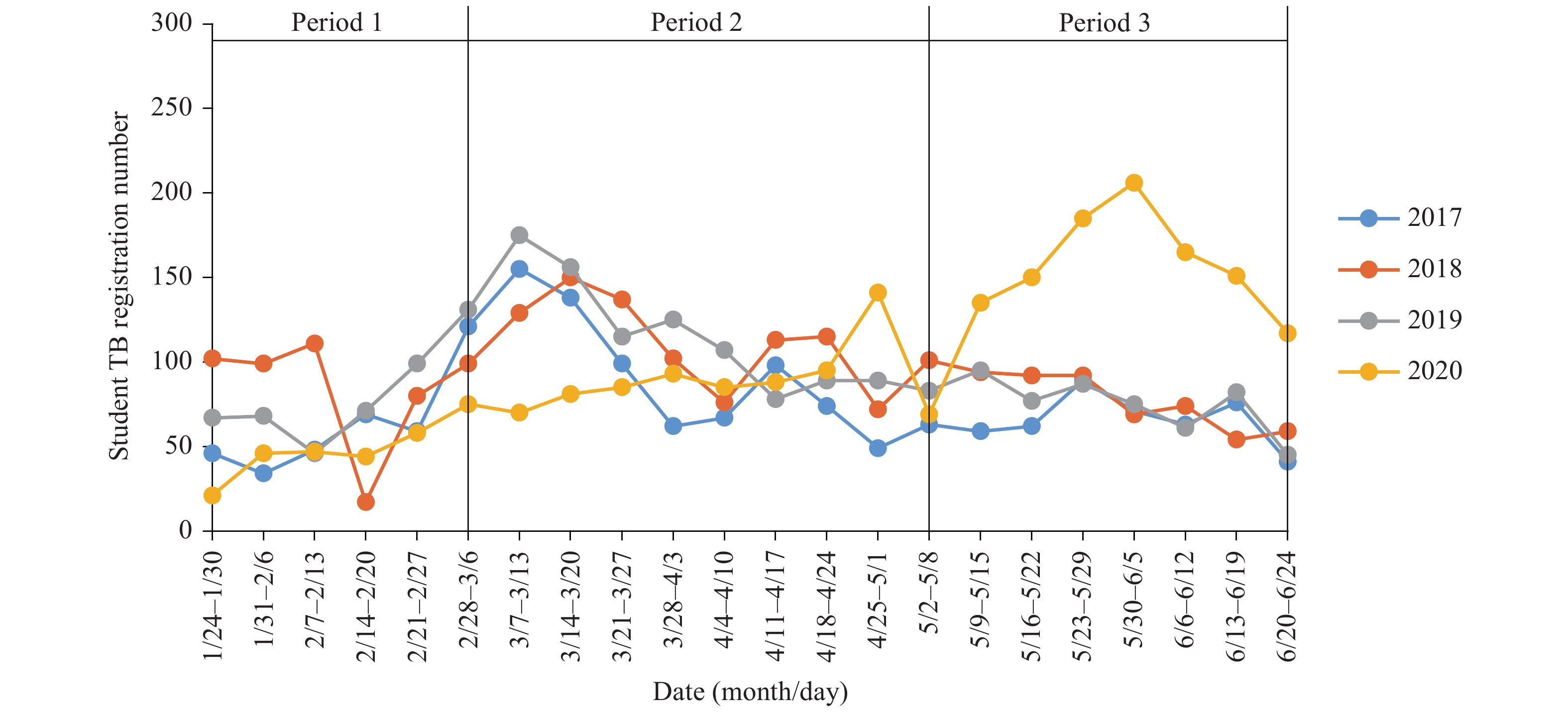2022 Vol. 4, No. 11
In the absence of effective vaccines, tuberculosis preventive treatment (TPT) is essential for the rapid decrease in incidences of tuberculosis (TB), and healthcare workers’ acceptability is vital to implementing TPT.
Overall, 86.5% of healthcare workers knew what TPT was. Most (56.3%) healthcare workers agreed to implement TPT among high-risk groups with latent tuberculosis infection. Drug resistance, adverse events, and unguaranteed efficacy were three main barriers for healthcare workers in accepting TPT.
To further promote and implement TPT in China, practical measures included policy support, high-quality training for healthcare workers, and enhanced public awareness of TB prevention and control.
In 2020, the implementation of non-medical interventions during the coronavirus disease 2019 (COVID-19) epidemic has created a negative impact on tuberculosis (TB) control. It is unclear if the prevalence of TB among students in Guizhou Province was also affected.
Among TB cases, the proportion of student TB patients was 19.91% in the back-to-school period in 2020, which was higher than the 13.37% registered in 2017–2019, but this decreased in the COVID-19 pandemic period. The time interval between symptom onset and care-seeking of the student TB patients was the shortest in the back-to-school and physical check-up periods.
TB active screening was effective for timely detection and diagnosis of TB among students, which could prevent TB outbreaks in schools.
China is a country with a high burden of tuberculosis (TB). However, the evaluation of TB burden is usually based on traditional epidemiological indicators, and disability-adjusted life year (DALY) is rarely applied.
In China, the number of DALYs caused by TB in 2019 was estimated to be 1.36 million, and the age-standardized rate (ASR) was 86.46/100,000. The DALYs of TB decreased significantly from 1990 to 2019, with the largest decline from 2001 to 2010. The burden is higher among men than women, and the highest among the elderly.
Application of DALYs can reflect the damage in health to China’s residents caused by tuberculosis. In the future, we should strengthen research, monitor years lived with disability (YLDs), and reduce the burden of the elderly and men. Cost-effective analysis based on DALYs should be conducted to provide a scientific basis for decision-making.
Shijiazhuang is one of the most polluted cities in China, but few studies have investigated the acute impact of fine particulate matter (PM2.5) on mortality in this city. We assessed associations between PM2.5 and cause-specific mortality during 2015 to 2020.
We obtained air quality data from Shijiazhuang Ecology and Environment Bureau, meteorological data from Shijiazhuang Meteorological Bureau, and mortality data from Shijiazhuang CDC’s Cause of Death Reporting System for our analyses. We used a quasi-Poisson regression generalized additive model to assess excess risk of death for a single time-lag and for moving average time-lags of 0–7 days, stratifying by year, sex, age, and education.
There were 76,859 non-accidental deaths recorded in Shijiazhuang during the study period. The daily concentration of PM2.5 ranged from 6.3 μg/m3 to 625.3 μg/m3, and the annual mean concentration was 77.6 μg/m3. Regression analysis showed that an increment of PM2.5 of 10 μg/m3 in a two-day average concentration (lag01) was associated with 0.47% [95% Confidence Interval (CI): 0.24%, 0.70%], 0.49% (95% CI: 0.19%, 0.79%), and 0.72% (95% CI: 0.22%, 1.23%) increases in non-accidental deaths, cardiovascular disease deaths, and respiratory disease deaths, respectively. With reduction of PM2.5 concentration, impact of PM2.5 on respiratory disease deaths decreased, but the impact of PM2.5 on total non-accidental deaths and circulatory disease deaths did not change significantly.
Although PM2.5 has been greatly reduced in recent years, PM2.5 pollution is still serious in Shijiazhuang. PM2.5 was significantly associated with non-accidental death, cardiovascular disease death, and respiratory disease death. As PM2.5 concentrations decreased, risk of death from respiratory diseases also decreased.



 Subscribe for E-mail Alerts
Subscribe for E-mail Alerts CCDC Weekly RSS Feed
CCDC Weekly RSS Feed

